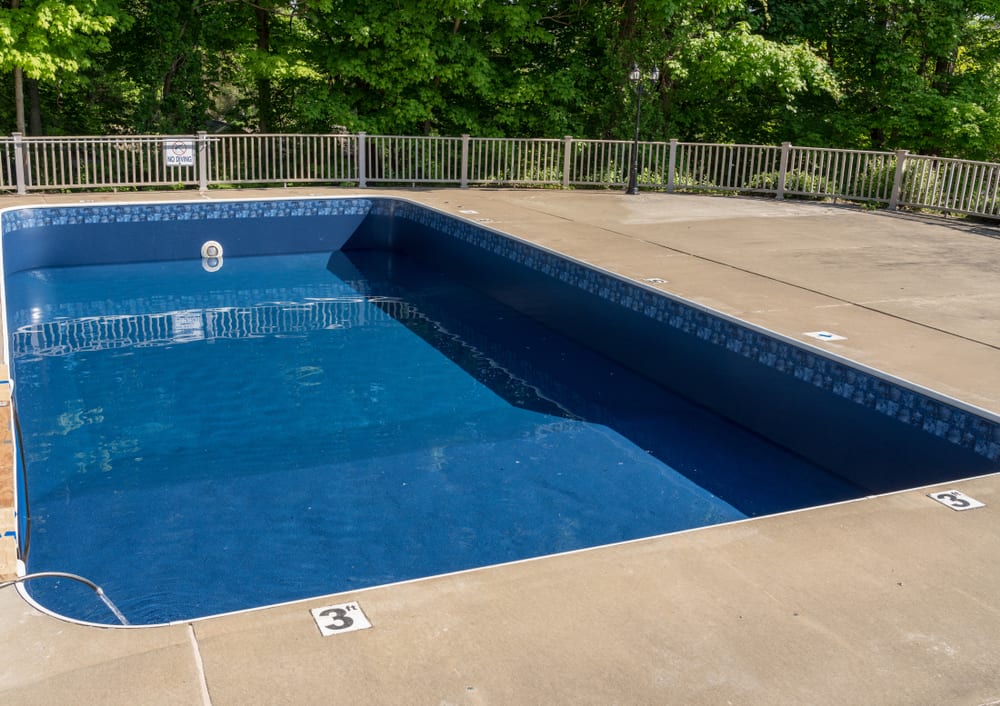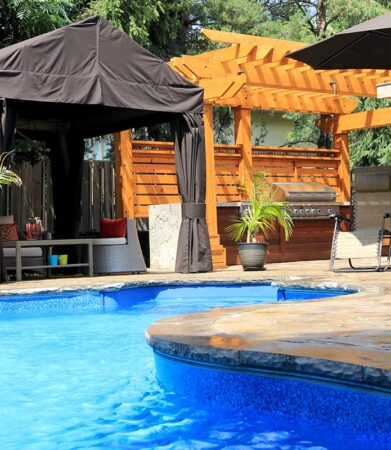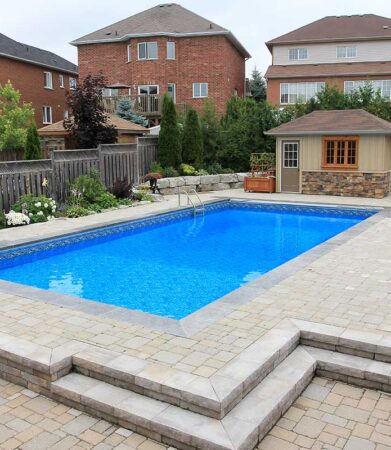
A new pool is a beautiful thing. It looks like it will last forever. But from day one, there are elements at work against your vinyl pool liner, elements that will reduce its lifespan.
Generally speaking, you should expect to replace a vinyl pool liner about every 10 to 15 years. But how long your liner lasts can depend on many different factors. The pool size can make a difference, with smaller pool liners lasting longer. If there is a lot of groundwater in your yard, the water pressure it exerts can have a ‘push/pull’ effect on your liner that can wear it out sooner than later. And your swimming pool maintenance program can make a big difference too.
So how do you know when it’s time to change your liner?
3 Signs It’s time to Replace a Vinyl Pool Liner
Of course, you don’t want to wait for the most obvious sign that it’s time to replace the liner, which is chronic leaking that’s due to wear and tear. So keep a vigilant eye out for any of the following signs that you may need pool liner replacement.
- Cracks & Tears Without Known Cause – Pool chemicals and the suns rays will eventually deteriorate just about anything. So, in a way, your swimming pool liner doesn’t have a chance. If you notice the liner cracking or tearing in places where there isn’t any apparent reason for it, then it’s a good sign that the liner needs replacing.
- Staining and Fading – Replacing inground swimming pool liners isn’t always about avoiding leaks or because the liner is torn. As time goes on, the patterns on vinyl liners begin to fade, or rust can leave an unsightly stain. You may want to get a new liner just to update the look of your pool.
- Stretching – You might notice signs of stretching in many different parts of your pool. A wrinkle on the pool floor, the liner slipping out of its track, or the vinyl fitting loosely around the return jets and skimmer. They are all signs that the pool liner has lost some of its elasticity and pliability. And a sign that it may be time for liner replacement.
If you enjoyed this post, check out our recent article about how to find a leak in a swimming pool.




